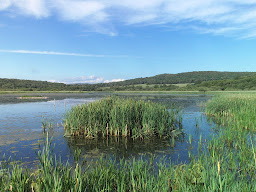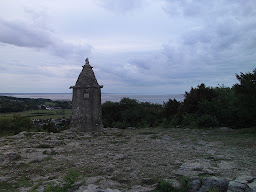The Longest Day
I must admit to a slight confusion over when the longest day and summer solstice actually falls - is it the 20th or the 21st of June? My calendar though reliably informed me that Saturday 20th June was the longest day and official beginning of summer for 2020 - although in the event the gathering cloud cover meant that the sun made its exit in any case long before it was scheduled! I began my meanderings at Leighton Moss RSPB, or at least the stretch of it viewable from the public footpath towards Leighton Hall. The reserve has been shut down and only gradually reopened in line with the lockdown measures and whilst the hides remain out of bounds and the main site was closed in the evening it was nice to be out amongst the reedbeds, with the accompanying early evening chorus of blackbird, reed warbler, Cetti's warbler and robin. A couple of redshank flew high over adding their evocative piping call to the soundtrack. I paused at the viewing screen on the Causeway Hide to take yet another photograph of what is one of my favourite views and to watch the waterbirds which included some well-grown coot chicks, great-crested grebe, mallard, moorhen and a mute swan family with five small cygnets far out in the bay, the cob an imposing sentry whilst the young followed the pen's lead in finding food. The omnipresent great black-backed gull was on its island with a handful of cormorant in support. I didn't linger too long though as a wren had built its nest above the doorframe to the hide and one of the parents was scolding me for disturbing the brood.
My next stop was the National Trust site at Eaves Wood, the southern end of the limestone and woodland stretch which culminates in Arnside Knott. Beech trees dominated stretches of the woodland and beneath their thick canopy and grotesque gnarled roots it quickly became gloomy. Enchanter's nightshade and the rich claret flowers of hedge woundwort dominated here whilst the lingering aroma of wild garlic spoke of earlier in the year. Grey squirrels were foraging actively and not paying too much heed as I passed by on my way up through the woods towards the Pepperpot monument. Finally breaking clear of the oppressive darkness of the beeches and it was through a small stretch of scrub before climbing onto the limestone heights where the Pepperpot is situated.
Enchanter's Nightshade The Pepperpot Red Ant on Heath Bedstraw
The Pepperpot monument was built to commemorate Queen Victoria's Golden Jubilee and it commands an outstanding view, even on a grey evening, over Arnside and across Morecambe Bay to the Lake District Fells. Amongst the jumble of limestone rocks grew marjoram, wood sage and heath bedstraw and despite the evening hour red-tailed bumbles were busily having a drink for the road. The delicate white flowers of the bedstraw had also attracted the attention of some red ants. After enjoying the view it was time to retrace my steps back through the woods and head to the final destination of the evening, on the way encountering first a roe buck and then shortly afterwards a doe which posed for some photos before nonchalantly munching on the vegetation.
My final stop was Fell End, a new nature reserve adjoining the caravan park of the same name just north east of Silverdale. Two hides look out over rough grassland and pools whilst a footpath leads through mixed woodland. From the first hide another roe doe was spotted, this one with two fawns which made intermittent appearances above the long grass as they skipped around. A lapwing pair with a well-grown youngster were amongst the mallard on the pond, with one of the adults seeing off the unwelcome attention of two carrion crows. Leaving the hide I ventured into the woodland, making the gruesome discovery of a grey squirrel's tail on the path - one of my friends who knows the area well believes this to be the work of red foxes. As the time ticked well past 9pm there was the incongruous evening chorus of swallow, willow warbler, song thrush, wren and robin all being joined by a male tawny owl hooting from a little further afield. To round off the evening seven of the reserve's favourite visitors, fallow deer, were spotted as they emerged from the woodland and out to browse in the open grassland. Presumably descendants of escapees from the deer park at Levens Hall, this population is far less approachable than their counterparts in places such as Dunham Massey, a distant photo before they made for cover was the best I could manage.










Comments
Post a Comment